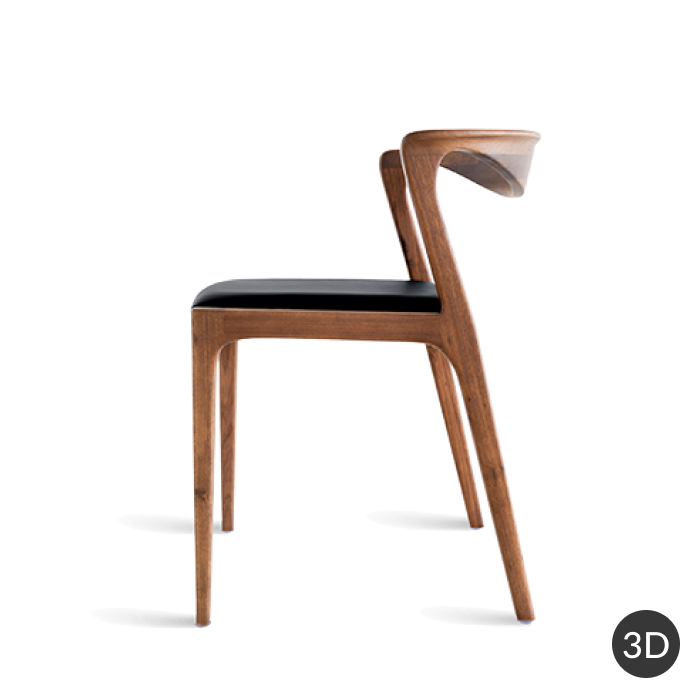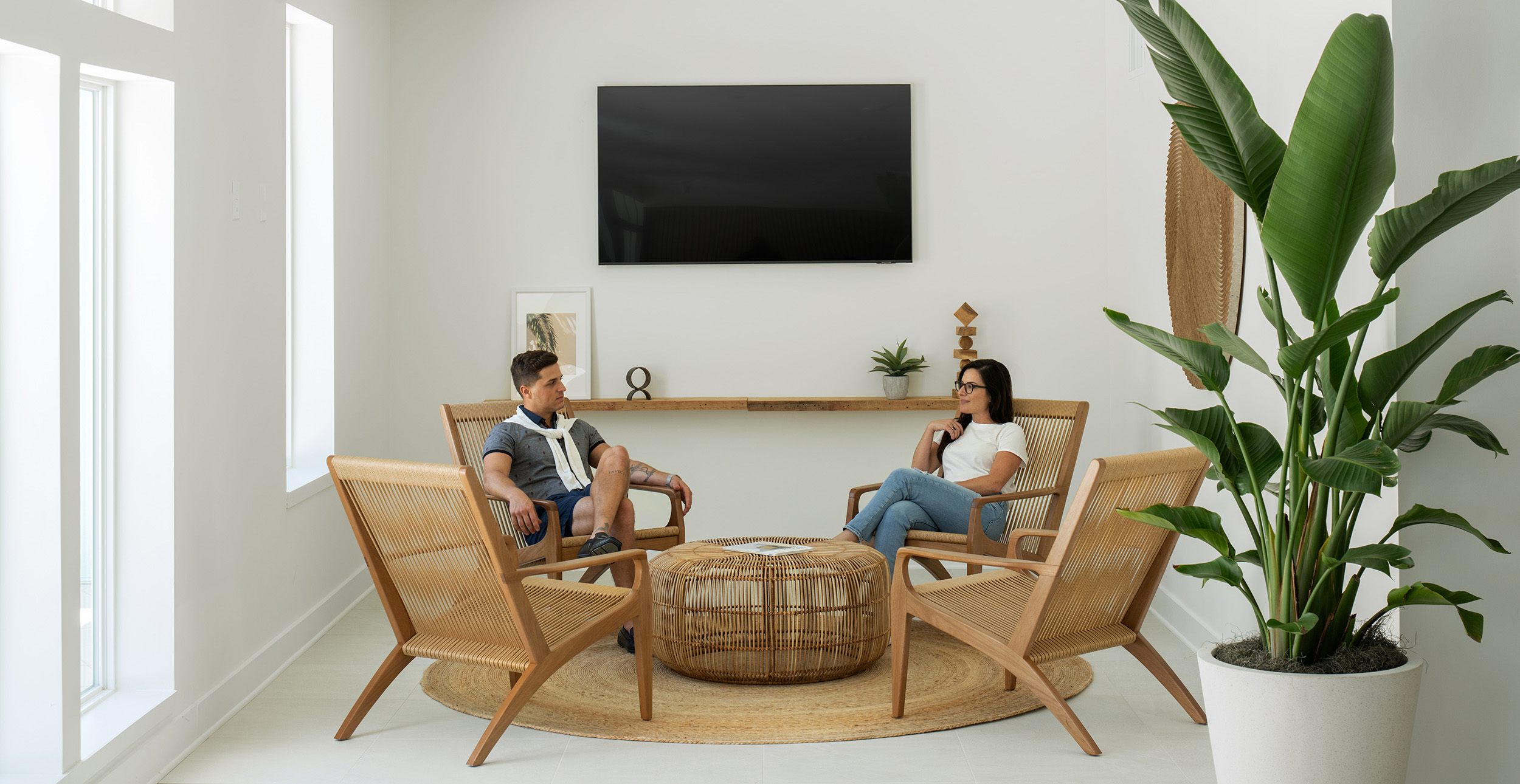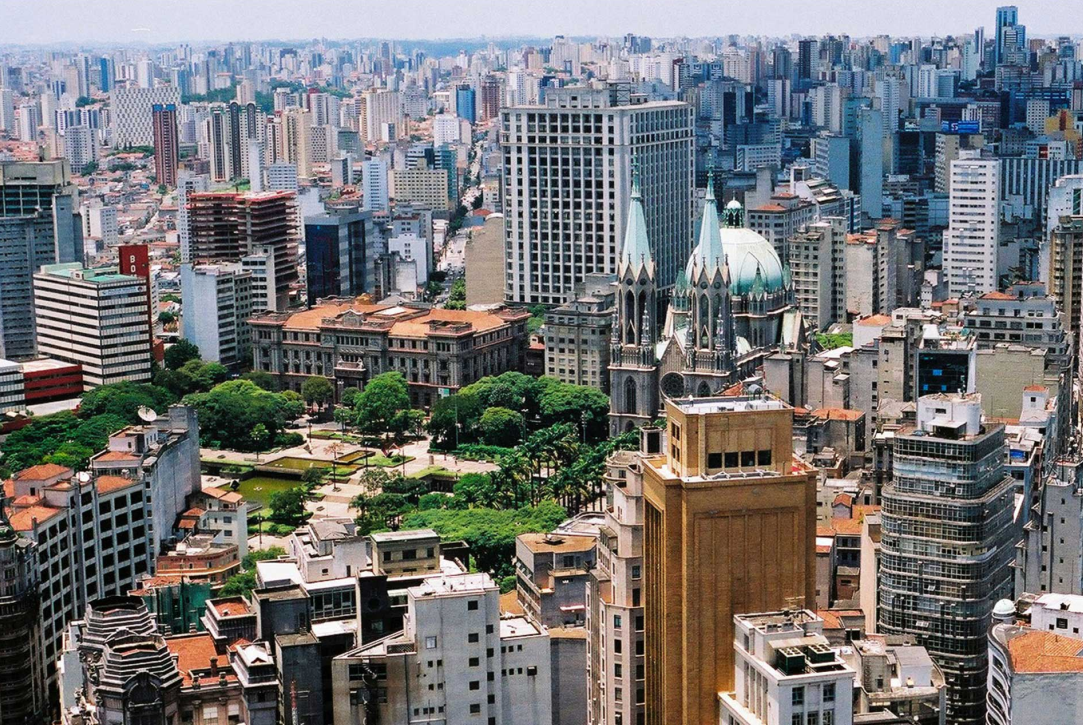Mister Jiu’s
In 2016 Chef Brandon Jew launched contemporary Chinese restaurant Mister Jiu’s in San Francisco. In Chicago, Jonathan Durling was opening his Sossego showroom to introduce modern Brazilian design to North America. For both men, it was the start of something big.
In a four-story Chinatown building constructed in the 1850s, up-and-coming chef Brandon Jew envisioned a modern restaurant that would celebrate the legacy of traditional Chinese food, In the planning and reconstructing of the enormous space, designer Michael Soelter went on the hunt for beautiful pieces that fit his imagining of the building they had taken down to the studs.
In his search, Soelter became enamored with the artistry of Aristeu Pires, designer of modern Brazilian furniture just then on display at the newly opened Sossego showroom at Chicago’s Merchandise Mart. The designer could picture Mister Jiu diners relaxing over sea urchin, barbequed pork, or tea-smoked duck in chairs of buttery smooth Jequitibá or Louro Freijó wood as they conversed around tables set beneath gold lotus chandeliers. When they placed an order for the chairs, he gave Sossego its first big sale.
If Brandon Jew was reimagining the Cantonese cuisine of his youth in an exquisitely designed setting when he gave birth to Mister Jiu’s, so, too, had Sossego’s Durling drawn on memories of his early years – those spent swaying to sleep in the comfort of a hammock that hung above his parents’ bed – when he pondered bringing modern Brazilian design and craftsmanship north.
In doing so, Durling introduced a way for diners in restaurants like Mister Jiu’s to enjoy their dining experience surrounded by beauty, comfort, and a bit of sossego, which in Portuguese means “a uniquely Brazilian way of being marked by calmness and tranquility.”

Mister Jiu’s
In 2016 Chef Brandon Jew launched contemporary Chinese restaurant Mister Jiu’s in San Francisco. In Chicago, Jonathan Durling was opening his Sossego showroom to introduce modern Brazilian design to North America. For both men, it was the start of something big.
In a four-story Chinatown building constructed in the 1850s, up-and-coming chef Brandon Jew envisioned a modern restaurant that would celebrate the legacy of traditional Chinese food, In the planning and reconstructing of the enormous space, designer Michael Soelter went on the hunt for beautiful pieces that fit his imagining of the building they had taken down to the studs.
In his search, Soelter became enamored with the artistry of Aristeu Pires, designer of modern Brazilian furniture just then on display at the newly opened Sossego showroom at Chicago’s Merchandise Mart. The designer could picture Mister Jiu diners relaxing over sea urchin, barbequed pork, or tea-smoked duck in chairs of buttery smooth Jequitibá or Louro Freijó wood as they conversed around tables set beneath gold lotus chandeliers. When they placed an order for the chairs, he gave Sossego its first big sale.
If Brandon Jew was reimagining the Cantonese cuisine of his youth in an exquisitely designed setting when he gave birth to Mister Jiu’s, so, too, had Sossego’s Durling drawn on memories of his early years – those spent swaying to sleep in the comfort of a hammock that hung above his parents’ bed – when he pondered bringing modern Brazilian design and craftsmanship north.
In doing so, Durling introduced a way for diners in restaurants like Mister Jiu’s to enjoy their dining experience surrounded by beauty, comfort, and a bit of sossego, which in Portuguese means “a uniquely Brazilian way of being marked by calmness and tranquility.”








